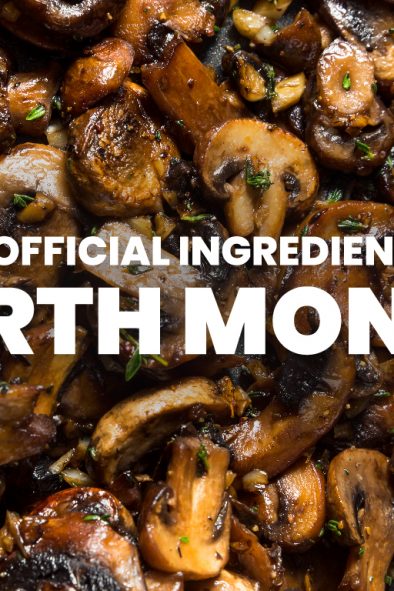Articles
Nutrition in the New Year: Enjoy these Elements of a Balanced Plate

By guest author Cara Harbstreet, MS RD LD
Like clockwork, the new year brings a renewed focus on nutrition, health, and wellness. It’s often accompanied by an audit of our habits, lifestyle, and routines. And we can’t overlook the well-intentioned desire to feed our immune systems to protect our health. The idea of balance doesn’t have to be an elusive one, especially when we take a closer look at what’s on our plates!
If you want to build better habits around mealtimes and create sustainable changes for 2022 and beyond, skip the resolutions and quick fixes! Instead, use the elements of a balanced plate to make small changes on a regular basis.
What Are The Elements of a Balanced Plate?
You may be familiar with the image of MyPlate, which replaced MyPyramid and other older Food Guide Pyramids in 20111. This visual representation of a balanced plate includes the advice to:
- Make half your plate fruits & veggies
- Fill ¼ of your plate with protein and ¼ of your plate with a starch, whole grain, or carbohydrate
- Pair with a serving of low-fat or nonfat dairy
While I can certainly appreciate the simplicity of these guidelines, I prefer to look at meals a little differently. When I’m working with clients to fine-tune and individualize their approach to eating, I remind them that there’s always room for adjustments within the broader, more generalized nutrition recommendations. Here’s what I encourage:
- A variety of colors, textures, and flavors
- Protein from various sources, including plant- and animal-based
- Substitutions and swaps based on preferences or nutrition needs (such as non-milk dairy alternatives for dairy allergies or gluten-free options for celiac disease and gluten sensitivities)
- Food choices that align with your personal values (like limiting food waste, supporting sustainable growing practices, and eating locally when possible)
- Elements of fun, creativity, and satisfaction
Eating with health in mind is not limited to nutrition alone. A positive side effect of including the elements listed above: overall higher diet diversity and quality, along with more enjoyment and satisfaction. In fact, increasing your intake of produce alone, including mushrooms, can contribute to a better overall mood and lower risk of all-cause mortality2,3.
Most importantly, I encourage you to eat an adequate amount of nutrition and energy (calories) instead of restricting your intake for the sake of a diet.
As a dietitian, my best recommendation for better health is to first and foremost make sure you’re eating enough for your body.
Gentle Nutrition in Action
To further reimagine the elements of a balanced plate, we can check in using these questions:
- Am I eating enough for my body and lifestyle? (nutrition adequacy)
- Am I eating a number of different foods that I enjoy and make me feel good? (nutrition variety)
- Am I consistently seeing elements like carbohydrates, protein, fat, fiber, and fluids in my meals? (nutrition balance)
- Could I benefit from changing anything? (targeted nutrition)
These concepts are the basis of “gentle nutrition”, the approach I use in my practice as a registered dietitian. Rather than encouraging strict food rules or dieting behaviors, it personalizes your food choices to your needs, values, and individual health-related goals.
This is where a food group like mushrooms can really shine. With the wide variety of sizes, textures, flavors, and culinary uses, you can exercise your personal preferences to cook with mushrooms in a way that pleases your palate.
Plus, mushrooms are a powerful pairing for other nourishing foods. We can look to blended burgers, for example, to see how combining chopped mushrooms with ground proteins can improve the overall nutrition and flavor of a meal. As a vegetable, they can also be easily added to stir-fries, casserole dishes, skillet meals, salads, and other dishes that make a frequent appearance on your table.
This new year, consider using these elements of a balanced plate with mushrooms in mind. To see mouthwatering examples of how these elements come together in delicious ways, visit the recipe archive.
References:
1https://www.myplate.gov/eat-healthy/what-is-myplate (MyPlate Primer)
2https://fruitsandveggies.org/stories/what-behavioral-science-has-to-say-about-food-mood/ (Produce for Better Health)
3Ba DM, Gao X, Muscat J, et al. Association of mushroom consumption with all-cause and cause-specific mortality among American adults: prospective cohort study findings from NHANES III. Nutr J. 2021;20(1):38. Published 2021 Apr 22. doi:10.1186/s12937-021-00691-8





